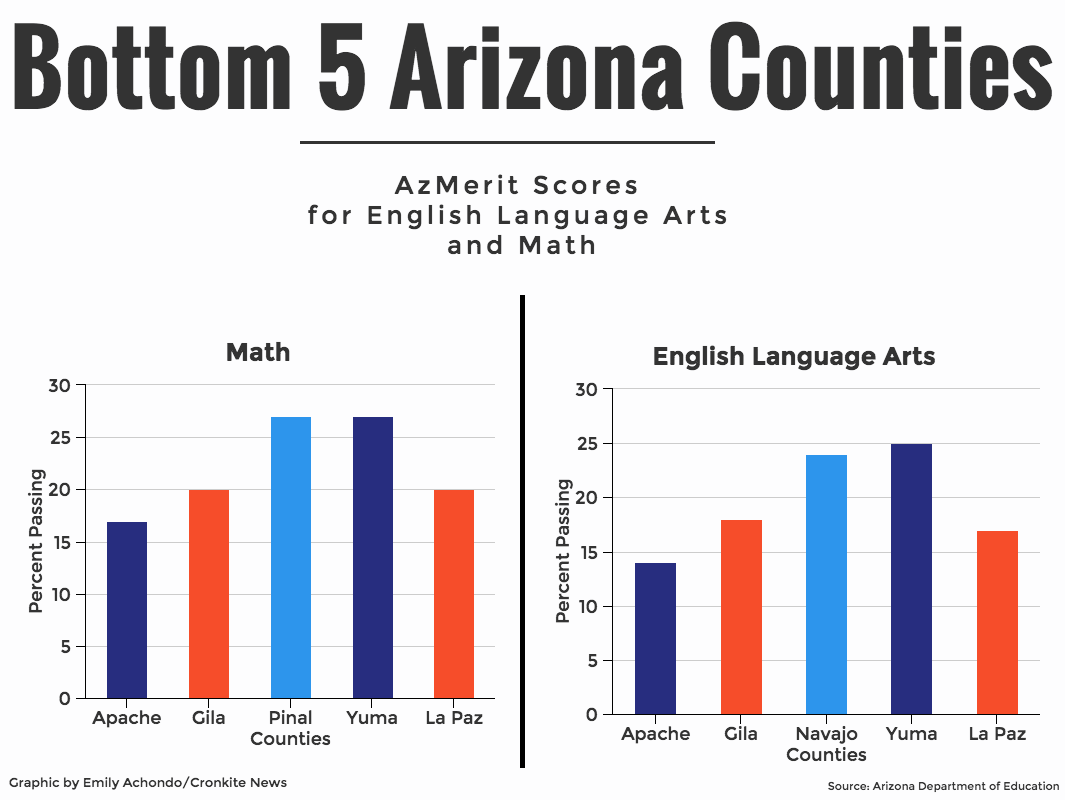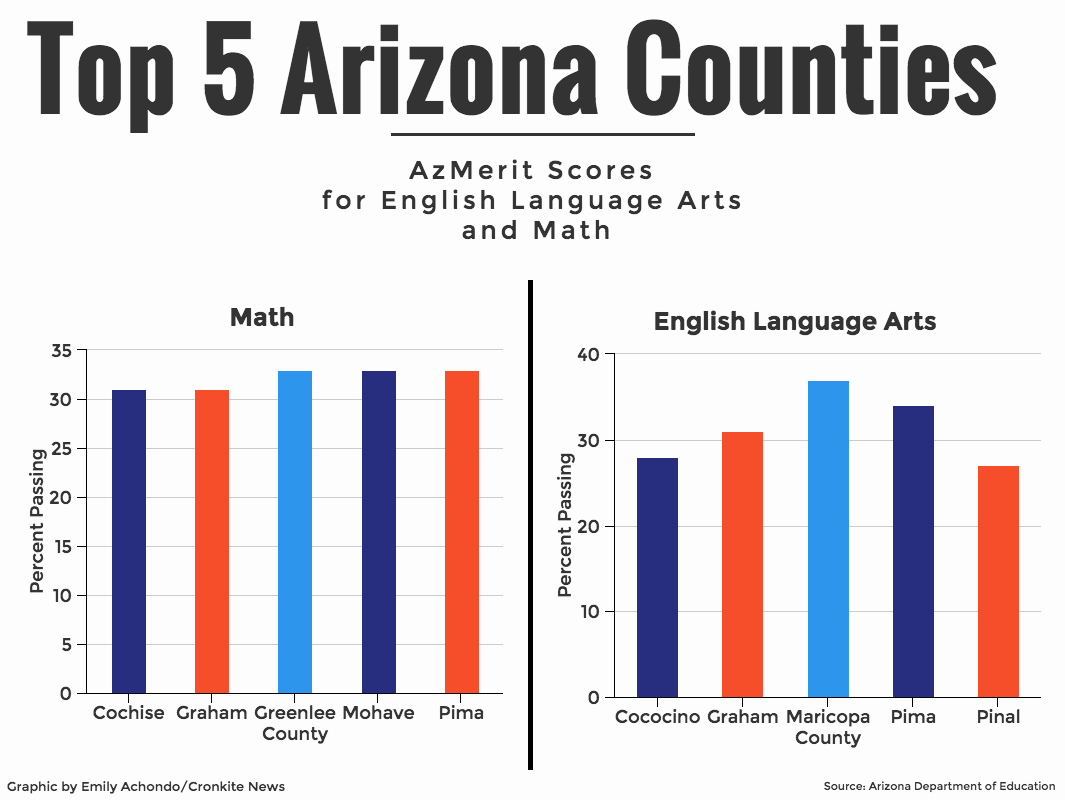Only 34 percent of Arizona students passed their English test in the state’s newest standardized assessment, according to results released Monday by the Arizona Department of Education.
Educators say the AzMERIT test data, which has a much lower rate of passing than its predecessor, the AIMS test, indicates a higher benchmark for Arizona students.
“We all knew that we had changed the bar,” said Rebecca Gau, executive director of Stand for Children Arizona, an education advocacy group that has been working to reassure and provide resources to parents who are used to seeing their children score in the top quartile.
Gau said she’s seen it firsthand as a mom. Her children normally scored in the “Exceeds Expectations” category, which is the top level in AIMS, but AzMERIT saw them drop down a category to “Proficient.”
“I had to remind myself that the proficient category does mean that your child is on track to enter English 101 or Math 101 without remediation,” she said. “So proficient is a good thing; we’re just used to seeing our kids pegged in that highest category.”
Most Arizona students in grades 3-11 performed worse; 65 percent of them failed to pass the math exam.
“The results as a whole tell us that we have a long way to go,” said Charles Tack, a spokesman for Superintendent of Public Instruction Diane Douglas.
Although Douglas has voiced disapproval of AzMERIT and its “hasty” 5-month adoption process, Tack said the new test provides a more realistic picture of Arizona students than AIMS did.
AzMERIT was created in part to accompany the Arizona College and Career Ready Standards, otherwise known as Arizona’s version of Common Core, which the Arizona State Board of Education adopted in 2010. Although the state board voted recently to cut ties with Common Core and is reviewing educational standards. Common Core remains in place for now.
Gau said Common Core standards may have influenced how different age levels scored on the new test. According to results, the oldest high school students taking AzMERIT were more likely to fail it compared to their younger peers.
Data from the assessment showed third-grade students passing the English test at 40 percent and 11th-graders passing their exam at 30 percent. There was a 12 percentage point disparity in the math test.
As Gau puts it, the older students have had more time to be accustomed to AIMS standard, while the younger students are starting out fresh.
“So it makes sense that the students who have been in school for 10 or 12 years haven’t been exposed to that level of rigor quite as long, whereas the younger kids have,” she said.
Another noteworthy trend was the low scores of students in rural counties.
Maricopa (37 and 38 percent for English and math, respectively) and Pima (34 and 33 percent), were the top-performing regions, but Apache (14 and 17 percent) and La Paz (17 and 20 percent) lagged behind.
Gau said that disparity can be attributed to the fact that most Arizona students live in Maricopa, where high-performing districts like Mesa Unified and Phoenix Union work to implement the standards.
“When you look at the rest of the state, we have a lot of low-income, rural areas, and they have struggled with all sorts of resource issues and poverty issues that mean they’re sort of entering school further behind, and it takes more for them to catch up,” she said. “And unfortunately, we see that in data like this.”
Tack, who visited Apache County during Diane Douglas’ “We Are Listening” and “We Heard You” tours, said the AzMERIT results confirmed what Douglas already knew: for rural schools, “it’s a different ballgame.”
Tack said those regions have tight resources and little incentive for good teachers.
“It can be very tough to convince a teacher to stay in Arizona at all when the salaries are not competitive, particularly if you’re in an area where a teacher can go across the border to another state and receive a higher salary,” he said.
Rep. Jeff Dial, R-Chandler, said more resources need to go directly into those classrooms, and he pointed to Proposition 123, Gov. Doug Ducey’s land trust proposal. Arizonans will vote on the proposition in May.
“It’s crucial to get that in there,” Dial said.
Gau says AzMERIT results are a positive step after “five years of work on alignment.”
“At some point, you just have to get a benchmark,” she said. “This year is a baseline. This year is a benchmark. We had to start somewhere.”

